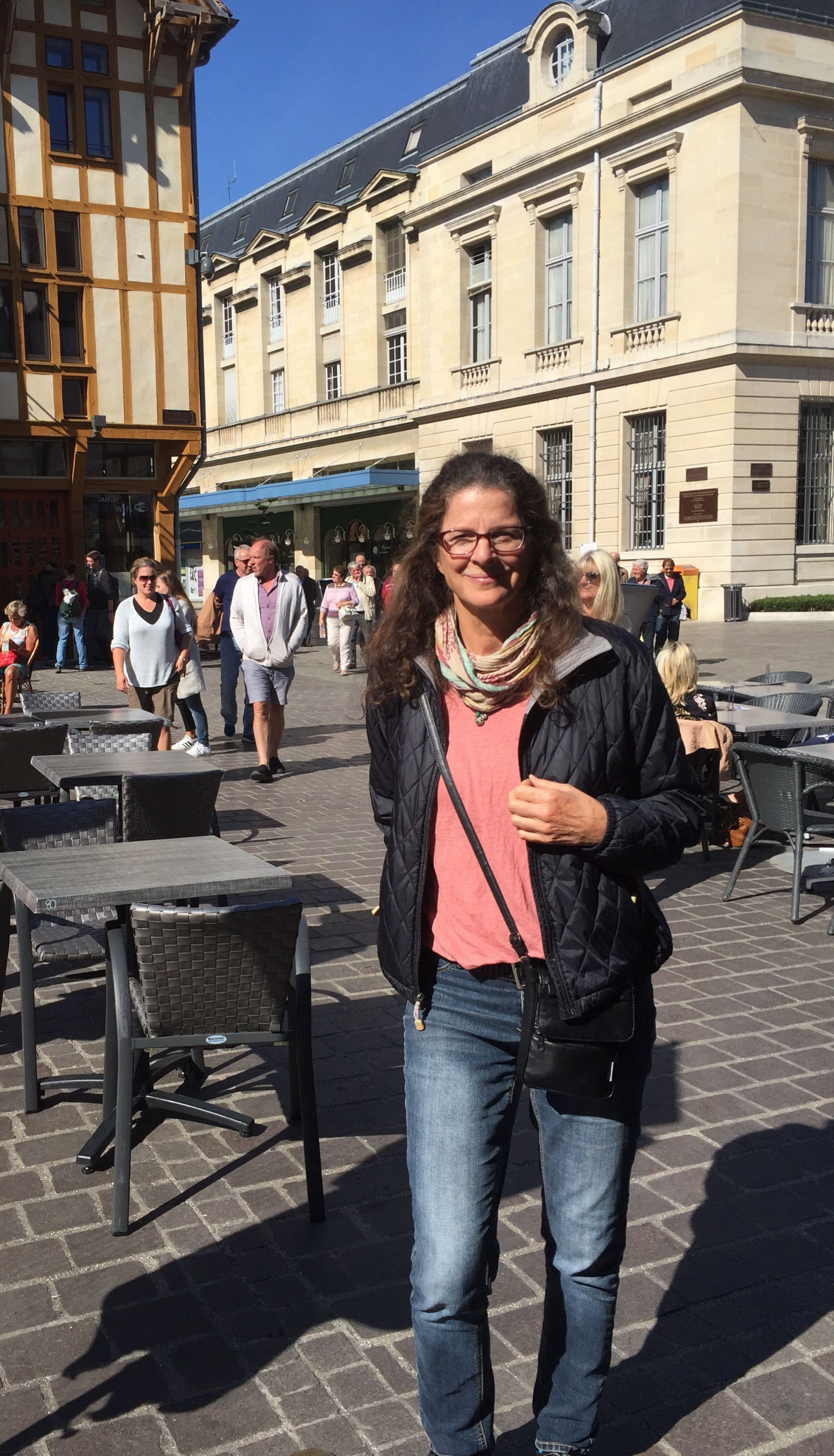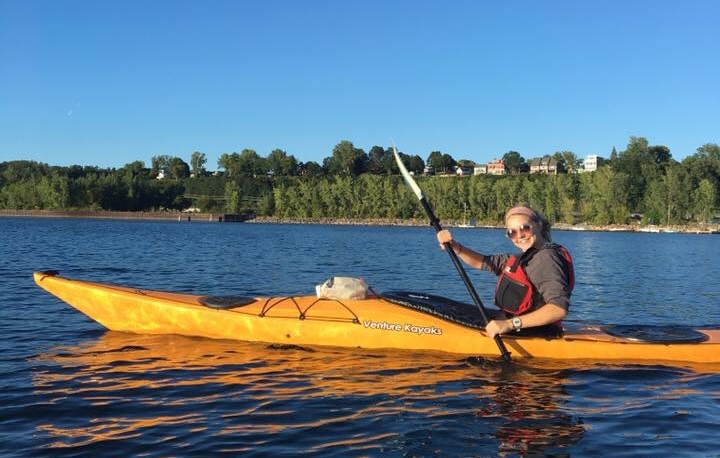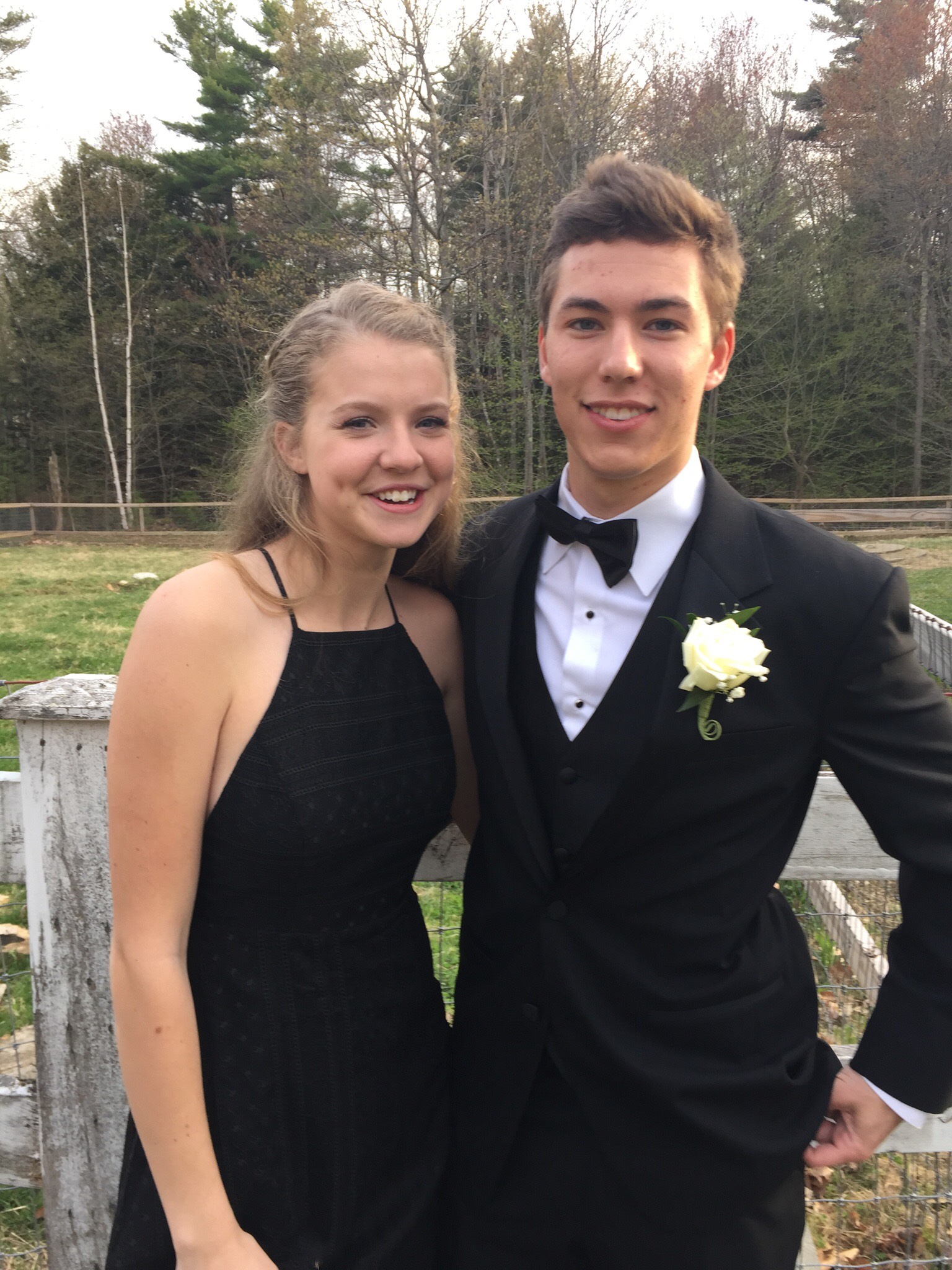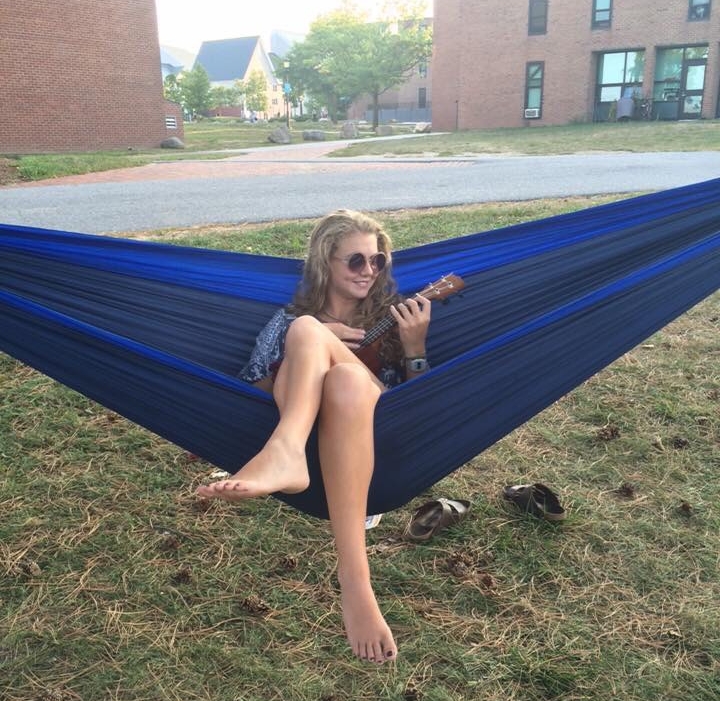Susan & Ted, moving past CF to find a beautiful life
This month, we're proud to be sharing the stories of cystic fibrosis parents, to celebrate Folia's recent CF launch in collaboration with Maine Medical and the Cystic Fibrosis Family Advisory Board of Maine. (Learn more.)
Today, we're excited to feature Susan and Ted, a Portland, Maine-based couple with two grown daughters. Hogan, their younger daughter, was diagnosed with CF at age 3. She's now a thriving college student who has lived a remarkably normal life, not defined by her disease. In this post, Susan and Ted share memorable moments of their CF parent journey, and everything that they have learned along the way.
ON LEARNING THAT YOUR CHILD HAS CYSTIC FIBROSIS
N: Thank you both so much for making the time to do this interview on a stormy Monday night. I’m very glad that we have the chance to tell your story to the community of parent caregivers. If you don’t mind, I’d like to start at the very beginning of your CF journey, when Hogan was diagnosed.
T: When she was first diagnosed, our reaction was to study the heck out of it to try to learn as much as possible – what the heck was this? It’s pretty grim for the first 6-12 months, you don’t sleep so well in the middle of the night. You think a lot about, “woe is me, why did this happen to our child, why us?”…it just feels like a tragedy.
We were lucky, though, because our CF clinic had become an advocate of being “out” about CF as a family. We’re also probably naturally that way. So we didn’t hide it in any way – we were very out, and in hindsight that might have been one of the most important things that we discovered. Because we were all so open about it, our daughter Hogan was very comfortable with having CF. Back then, she didn’t know anything about the mortality risk, but she knew that she had it and that she had to do certain things that were related to it. CF became a very normal part of her life.
S: It was all so routine that it became like brushing teeth. She accepted it with very few complaints, and we treated her like a normal kid. While the early part of learning about the disease was devastating, within that same year we connected with the Great Strides walk in Portland. We put a tremendous amount of energy and passion into fundraising, and that helped a lot.
T: It became very clear – when you end up with a situation like this in a family setting, you have to focus on what you can do about it. We’re not scientists – we were not going to invent a genetic cure – but there were two things that we felt that we could take action on, and they give a sense of control.
The first one was to raise as much money as possible for the CF Foundation, because that might be a path to a cure. The second thing was that we could do everything possible to prepare Hogan to take on the responsibility of the disease herself, so that hopefully she lives a reasonably long adult life.
ON BRINGING CF TO SCHOOL
N: That makes a lot of sense. It sounds like community and interpersonal relationships became very important to you.
Hogan playing ukelele, with a picc line
T: Exactly. We would even go into the schools – Susan was really good at this. Like a lot of diseases, with CF you got a 504 plan for your child’s educational rights. For CF it’s pretty simple stuff, like hygiene in the classroom, allowing your child to use the bathroom more, maybe more time for studying because of therapy that they have to do, maybe some tutoring because they’re out a lot.
What popped out of that, though, was that we started going into Hogan’s class, from Kindergarten through 4th grade, and we would do a show-and-tell about CF. We made sure it was age-appropriate and in their language.
S: The impetus behind going to the classroom at that time was to keep a healthy classroom. We made it fun – we had someone from Maine Medical Center come in and use the green light to show people where they missed washing their hands, and we had other kids share what makes them special. We would hear from the teachers that they would have their healthiest years when we came in, and they would continue with the clean routines in the following years!
T: We brought this vibrating vest that kids with CF have to use for physical therapy – it’s a strange machine, a little scary sounding – and Hogan would put it on and show the other kids what she had to do. When she spoke with the vest on, it would have this funny sound, and then the other kids would want to try it on! The CF made her special, even popular in her class. Her pride would give her so much strength in her early years that it brought her through the more difficult things later on.
If you're a caregiver or patient, you notice a lot of things that you'd love to share with your doctor.
That's where Folia comes in.
ON RIVER ADVENTURES, PROM, AND SYRINGES
T: She went to this really cool camp in New Hampshire, starting when she was 5 for 2 weeks, and then when she was 7 for 4 weeks. They were great about accommodating her.
Hanging out in a kayak
At this camp, when you’re 14 years old, you go for a three-week trip on the Allagash [River]…midway through, a sea-plane comes through and resupplies the group! We had to have different sets of her medications in different canoes and dry-boxes, because sometimes the canoes go down and they lose stuff. She couldn’t lose her medications. We had to train two of her counselors to do her physical therapy. Now, she has amazing photos of her physical therapy happening in the most amazing places along the Allagash. This kid wouldn’t allow CF to stop her from doing that!
When she was a junior in high school, she ended up with a spontaneous rupture of one of her lungs. It was a very severe circumstance, and it didn’t close quickly as it was supposed to, so she had to have an arthroscopic surgery to staple the lungs. She ended up with several holes between her ribs for surgery and drainage. But she had bought this black sexy dress that tied at the neck for prom, and her primary concern – throughout this whole episode, being severely sick – was to not miss the prom. She was discharged on Friday, went to the prom on Saturday, and she looked fantastic. If you looked closely at what the dress didn’t cover, though, it looked like a machine gun had ripped a bunch of holes in her side. She was in pain, but she was going to be there.
In that black dress for prom
Hogan also self-serves her own IV. Last year around Christmastime, she was in downtown Portland and decided to just jump in a car with a friend to dose herself. I’m sitting there thinking, in this day and age, imagine finding someone in a car with this massive syringe, you’d think it’s heroin! <Laughs.>
AN OLDER SISTER’S PERSPECTIVE
[N: While I was talking with Ted and Susan, their daughter Perrin walked in. Perrin is Hogan’s older sister, and she took a few moments to share her experience of being the sister to a CF patient.]
P: Well, let’s see. I was 8 when she was diagnosed, and she was 3. When you’re 8, that’s a very big age difference – I was the older sister, she was the baby. I could grasp the beginnings of it – I still remember when you told me about her diagnosis that night in the kitchen. I remember that I felt like I had this other responsibility to protect her.
My aunt asked me something strange recently – did you ever feel that you were competing for attention? And it’s funny, that never crossed my mind.
Hogan and Perrin
I remember being about the age that I could start to babysit, maybe around 12, and thinking about the mortality issue. It was always a question that I had, from the very first time that my parents told me about her diagnosis…are you going to tell her? Well, from a very young age, Hogan loved watching medical documentaries on TV for some reason. One day when I was watching her, a documentary came on about CF, and I had to make up an excuse to change the channel because she hadn’t learned about all of it yet.
At one point, though, she took it into her own hands and looked it all up, and now knows more than we all do.
S: It was almost like Santa Claus – she definitely knew earlier than we realized.
P: But she wasn’t upset about it. We were all waiting for it like it was going to be a huge event, but it wasn’t. She knows that to be healthy, she needs to make tough calls sometimes, so she takes care of herself.
ON THE CLINIC FAMILY
T: We’re fortunate that we haven’t had a lot of personnel change in the clinic that we go to. Like Mary Ellen – she’s been there for 18 years with us! And Anne Marie. It’s amazing. Hogan wrote a blog for the CF Foundation, and she writes about these people as though they’re family. They really do care.
S: The CF Foundation has also established standards throughout the country – there are 200+ clinics now, including adult clinics.
T: In Portland, they were always honest with us, but they also listened.
One time, we had an idea that they were willing to try. She was allergic to an antibiotic, and we had the idea of doing a very gradual increase in the amount of the antibiotic, to see if she would get used to it. The clinic staff did a lot of work with allergists to give it a try, and it worked! She can take that drug full-on now.
S: I think that the CF Foundation has a lot to do with that too – it’s very much based on the idea of a multi-disciplinary center of care. I think that’s where Folia fits – there’s so much to keep on top of, it’s a very complex disease. There’s pulmonary and there’s digestive and there’s behavioral, and you have to know what’s going on with all of it.
A teenage Hogan on a hike
ON ADVICE FOR OTHER CAREGIVERS
N: What advice would you give to other parents who are starting to manage a chronic disease?
S: To be honest, I think it’s important that we never called her treatments medicine. We would always explain it like a vitamin – you have to take it to be healthy. It’s little nuances like that which make the difference.
Also, the CF Clinic in Portland asked Hogan to go in and talk to newly diagnosed parents, so they could see a thriving older kid who is fighting and doing well, to see that it’s not an immediate death sentence. It’s really important to use the network.
T: I would also say that anything like this is a two-edged sword. The reality of CF is that it’s life-shortening, and without a couple of miracles that might be in the pipeline, our second daughter is likely to have a shorter life than you would expect.
That having been said, though, there’s another edge to the sword – we appreciate our two children so much more because one is challenged. We don’t take certain things for granted that others may.
We’ve also met the most incredible other people who are so strong and motivated – they’re from so many other walks of life, they’re people I would never have known, and it’s an amazing community. It makes you realize that anything can happen. The CF Family Advisory Board is like that – the clinic didn’t invent that, we made that. You open your heart to more than just your own kid – it forces that type of charity to happen. CF pushes you into that kind of a space. We’re caregivers.








